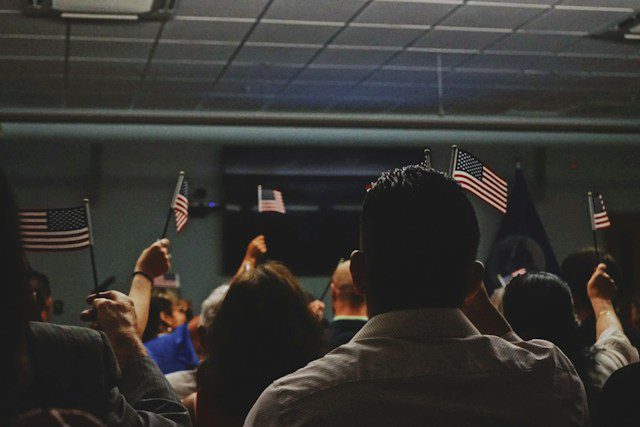President Biden immigration modernization bill is introducing a measure to Congress to bring back American principles and humanity to the immigration system. The law gives those who have been here for years, perhaps even decades, and are industrious, contributing members of our communities the chance to become citizens.
The bill updates our immigration laws and places a higher priority on maintaining family units, expanding the economy, investing wisely to manage the border, tackling the underlying reasons behind migration from Central America, and guaranteeing that the United States will always be a haven for people fleeing persecution.
Highlights Of The Immigration Modernization Bill
- Establish Labour Protections & Provide Paths To Citizenship: Provide an earned path to citizenship for people without documentation. Under the law, illegal people can seek temporary legal status. If they pass criminal and national security background checks and pay their taxes, they can apply for green cards after five years.

- The law grants green cards instantly to Dreamers, TPS holders, and immigrant farmworkers who satisfy certain standards. All holders of green cards who complete extra background checks and show that they understand English and American civics after three years are eligible to seek citizenship. On or before January 1, 2021, applicants must be physically present in the United States.
- For family unity and other humanitarian reasons, the Secretary of the Department of Homeland Security (DHS) may suspend the presence requirement for individuals deported on or after January 20, 2017, provided they were physically present for at least three years before removal. Finally, by replacing the term “alien” in our immigration laws with “noncitizen,” the bill further acknowledges America as a country of immigrants.
- Maintain family unity: By removing long wait periods, reclaiming unused visas, clearing backlogs, and raising per-country visa quotas, the law improves the family-based immigration system. The so-called “3 and 10-year bars” and other clauses that divide families are also removed.
- By expressly embracing permanent relationships and doing away with discrimination against LGBTQ+ families, the measure better benefits families. In addition, it offers security to children, widows, orphans, and Filipino veterans who served in the United States during World War II. Last but not least, the measure permits immigrants to join relatives in the country temporarily.
- At the same time, they wait for green cards to become available if their family-sponsorship petitions are accepted.
- Accept variety. The NO BAN Act, which forbids discrimination based on religion and restricts the President’s ability to impose bans in the future, is included in the measure. The measure also raises the number of Diversity Visas from 55,000 to 80,000.
- Encourage citizenship and immigrant and refugee assimilation; The bill increases funding for programmes supporting integration and inclusion, boosting English-language instruction, and helping people apply for citizenship by giving additional funding to state and local governments, private organisations, educational institutions, community-based organisations, and not-for-profit organisations.
- Expand the economy: With the passage of this bill, long wait periods are shortened, employment-based visa backlogs are cleared, and per-country visa limitations are removed. The measure removes further needless barriers to employment-based green cards. It facilitates the process of obtaining green cards for workers in lower-paying industries. It also makes it simpler for STEM graduates from American colleges to remain in the country.
- The law keeps kids from “ageing out” of the system and grants work permission to H-1B visa holders’ dependents. To prevent unfair competition with American workers, the measure also establishes a pilot programme to promote regional economic growth, grants DHS the power to modify green card applications depending on macroeconomic conditions, and provides greater pay for non-immigrant, high-skilled visa holders.
- Prevent labour exploitation and enhance the process of verifying employment. The law mandates that to submit suggestions for improving the employment verification process, DHS and the Department of Labour must form a panel including labour, employer, and civil rights organisations. Serious labour breaches will increase the availability of U visa relief for workers who assist worker protection organisations. The bill permits labour agencies to examine workers who have experienced workplace reprisal by shielding them from deportation. Additionally, it strengthens penalties for companies that break labour regulations and safeguards seasonal and migratory labourers.
Smart Border Controls Priorities Of The Immigration Modernization Bill
Add technology and infrastructure to the border’s current resources. By authorizing additional funding for the Secretary of DHS to create and implement a plan to deploy technology to speed up screening and improve the ability to identify drugs and other contraband at every land, air, and sea port of entry, the legislation builds on record budget allocations for immigration enforcement.
High-throughput scanning technology is part of this, ensuring that pre-primary scanning is performed on all commercial, passenger, and freight rail traffic entering the United States at land ports of entry and rail-border crossings along the border.
Additionally, it approves and finances initiatives to upgrade infrastructure at ports of entry to better handle asylum requests and identify, stop, disrupt, and stop drugs from entering the country. It gives the DHS Secretary permission to create and carry out a plan to monitor and safeguard the southern border between ports of entry.
This plan will be centred on adaptable technologies and solutions that enhance the capacity to identify illegal activity, assess the success of border security measures, and be readily deployed and breached by the Border Patrol Sector. The DHS Inspector General is authorised to oversee technology use to ensure it fulfils valid government goals while maintaining privacy.
Control the border and safeguard border towns. The law finances training and ongoing education to support the professionalism and safety of agents and officers. A Border Community Stakeholder Advisory Committee has also been established.
More special agents are assigned to the DHS Office of Professional Responsibility to look into administrative and criminal misbehavior cases, and department-wide procedures controlling the use of force must be released.
The bill provides for more rescue beacons to prevent unnecessary deaths along the border and instructs the Government Accountability Office (GAO) to investigate the effects of DHS’s authority to waive state, local, and federal laws and the environment to expedite the construction of barriers and roads near U.S. borders.
In collaboration with the Department of Health and Human Services (HHS) and nongovernmental experts, the measure authorises and funds DHS to create standards of care for people, families, and children detained by CBP.
Take tough measures against criminal groups. The measure makes it easier to prosecute people who are part of trafficking and smuggling organisations and who exploit migrants.
To strengthen penalties against international drug traffickers, their networks, and organisations, it also broadens inquiries, gathers more intelligence, and analyses it by the Foreign Narcotics Kingpin Designation Act. If you are interested relocating to the US or Europe in 2024, kindly book an appointment with our study and work abroad consultants.
How The Immigration Modernization Bill Solves The Immigration Problems
- Commence at the source:The bill codified and funded the President’s $4 billion, four-year interagency plan to address the root causes of migration in the region. Part of this plan includes increasing aid to El Salvador, Guatemala, and Honduras, contingent on their capacity to lessen the widespread poverty, violence, and corruption that drive people from their home countries.
- Additionally, it establishes safe and authorised pathways for individuals to seek protection, such as the establishment of Designated Processing Centres across Central America to register and process displaced individuals to prepare them for refugee resettlement and other legal migration pathways, either to the United States or other partner nations.
- Strengthen the immigration courts and provide vulnerable people with protection. The law enhances immigration court technology, decreases case backlogs, increases immigration judge training, and extends family case management programmes.
- By giving courts and adjudicators the latitude to consider cases and provide relief to worthy parties, the measure brings justice and balance back to our immigration system. Legal orientation programmes and legal advice for minors, older people, and others are approved for funding to guarantee the just and expeditious handling of their cases. In addition, the measure clarifies sponsor obligations for unaccompanied minors and gives funds to school systems that educate them.
Asylum seekers and other vulnerable groups should get assistance. The measure reduces the one-year timeframe for submitting asylum claims. It allocates funds to clear the backlog of asylum applications. Additionally, it strengthens safeguards for applicants for T, VAWA, and U visas, among other things, by increasing the quota on U visas from 10,000 to 30,000. The measure also strengthens safeguards for foreign nationals helping American military forces.


